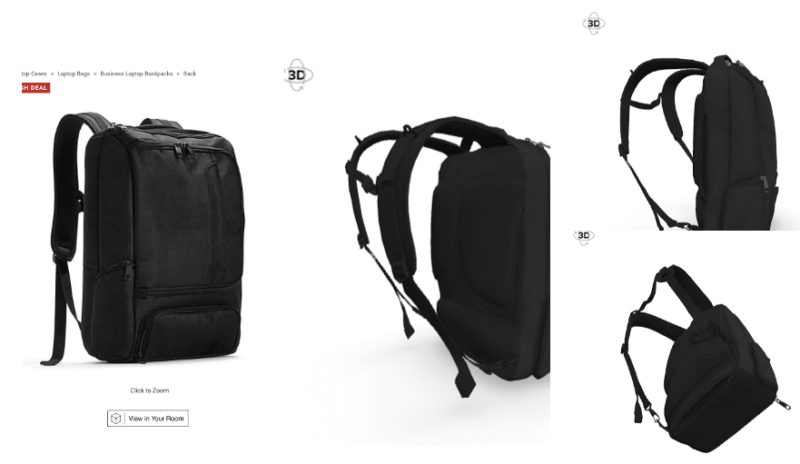Augmented reality starts driving sales: AR product engagement increased mobile purchases at eBags
There was a 112% increase in mobile conversions when users interacted with 3D-AR enabled products, the company says.
Despite billions of dollars spent over a period of years, virtual reality is still not mainstream – and may never be. Augmented reality (AR) is on a different path however.
Snap filters and Pokemon Go introduced many consumers to AR. And over the past few years, AR features have appeared in numerous brand and retail apps, such as L’Oreal, Wayfair, Crate & Barrel, Gucci, Ikea, Lowes, H&M, Macy’s, Adidas, Amazon and many others. To date, these have mostly been experiments or novelty features.
3D-AR toaster on Macy’s app

A year ago Google introduced 3D images into search results. It has also rolled out AR enhanced walking directions in Maps and recently expanded the availability of its 3D Swirl Ads format.
Conversion and revenue impact. AR is proliferating and becoming more familiar. But to date there have been few case studies showing a revenue impact. However, Chris Seahorn, SVP of Marketing and Merchandising for eBags, told me that shoppers interacting with 3D-AR features on the site are converting at much higher rates.
The company saw a 112% increase in mobile conversions and 81% on the PC when people interacted with 3D-AR-enabled products. Equally important, Seahorn told me that there were lower return rates for products with the 3D-AR feature.
Samsonite-owned eBags recently deployed 3D and augmented reality to showcase selected products on their websites, using technology from Vertebrae. The feature allows users to spin and digitally examine products from all angles as well as “view in room.” The company initially deployed the technology on only a few core products and is now expanding its use.
3D product engagement on eBags website

The technology is not unique and is being used by others, but what’s seemingly unique is the real impact it’s starting to have on eBags’ revenue. Seahorn says that 3D-AR complements product thumbnails, video and other features on the site to showcase products. He says he doesn’t have the data yet but suspects that those who engage with 3D-AR are going to show more frequency and lifetime value than other shoppers.
Bringing more ‘real-world’ context to virtual shopping. Seahorn explains eBags was trying to make it easier for customers to experience the product in a more complete way, as they might in a store. And he believes that more AR and immersive digital experiences will be common among retailers as they lean more into e-commerce and close stores.
Major retailers in the U.S. are closing store locations or going out of business as the pandemic takes its toll on traditional shopping. At the same time, e-commerce has seen triple-digit growth in many categories. Seahorn asserted that the post-COVID future of retail looks very different than its past, with fewer stores and smaller retail footprints. He also argued that early adopters of these technologies will have a “first mover advantage.”
Why we care. The AR showcased in the eBags example is a simple (even pedestrian) but practical use case. It brings some of the “physical experience” of the product to digital and gives consumers a better sense of what they’re buying. But ads will be the next and arguably more interesting frontier for this technology, as Google, Facebook and other platforms seek to bring more vitality and immersive engagement to advertisers and consumers alike.
Opinions expressed in this article are those of the guest author and not necessarily Search Engine Land. Staff authors are listed here.
Related stories